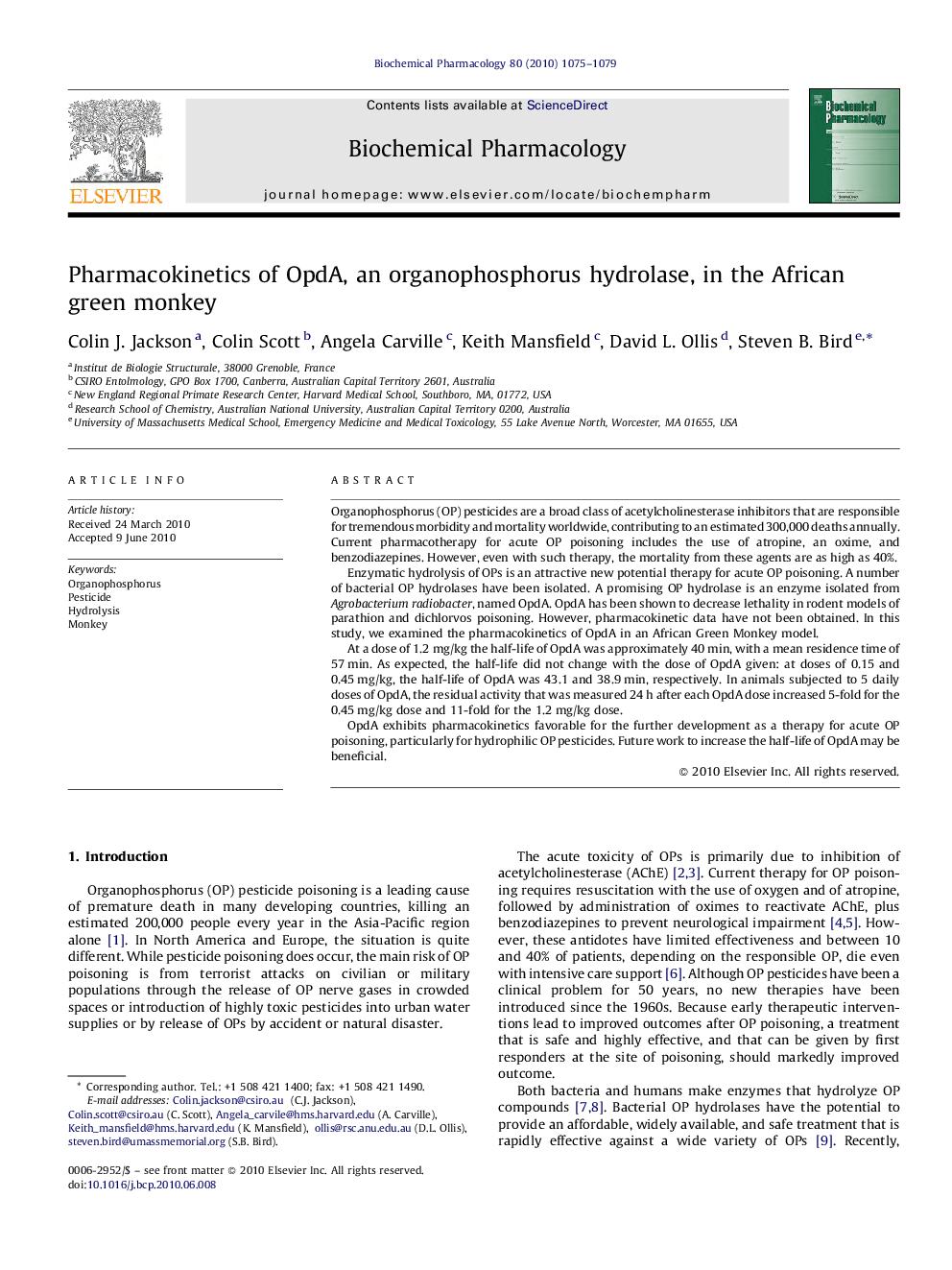| Article ID | Journal | Published Year | Pages | File Type |
|---|---|---|---|---|
| 2513353 | Biochemical Pharmacology | 2010 | 5 Pages |
Organophosphorus (OP) pesticides are a broad class of acetylcholinesterase inhibitors that are responsible for tremendous morbidity and mortality worldwide, contributing to an estimated 300,000 deaths annually. Current pharmacotherapy for acute OP poisoning includes the use of atropine, an oxime, and benzodiazepines. However, even with such therapy, the mortality from these agents are as high as 40%.Enzymatic hydrolysis of OPs is an attractive new potential therapy for acute OP poisoning. A number of bacterial OP hydrolases have been isolated. A promising OP hydrolase is an enzyme isolated from Agrobacterium radiobacter, named OpdA. OpdA has been shown to decrease lethality in rodent models of parathion and dichlorvos poisoning. However, pharmacokinetic data have not been obtained. In this study, we examined the pharmacokinetics of OpdA in an African Green Monkey model.At a dose of 1.2 mg/kg the half-life of OpdA was approximately 40 min, with a mean residence time of 57 min. As expected, the half-life did not change with the dose of OpdA given: at doses of 0.15 and 0.45 mg/kg, the half-life of OpdA was 43.1 and 38.9 min, respectively. In animals subjected to 5 daily doses of OpdA, the residual activity that was measured 24 h after each OpdA dose increased 5-fold for the 0.45 mg/kg dose and 11-fold for the 1.2 mg/kg dose.OpdA exhibits pharmacokinetics favorable for the further development as a therapy for acute OP poisoning, particularly for hydrophilic OP pesticides. Future work to increase the half-life of OpdA may be beneficial.
Graphical abstractPharmacokinetics of OpdA activity using 3 different doses in a monkey model. OpdA has an in vivo half-life of approximately 40 min.Figure optionsDownload full-size imageDownload as PowerPoint slide
